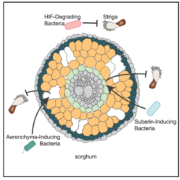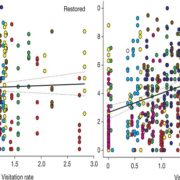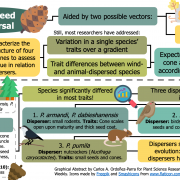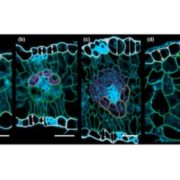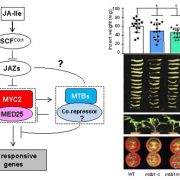Volatiles as inducers and suppressors of plant defense and immunity — origins, specificity, perception and signaling (Current Opinion in Plant Biology)
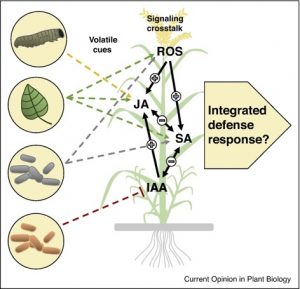 When plants are under attack by herbivores and microbes, running away is not an option. As a defence, plants produce volatile organic compounds (VOCs) that repel herbivores, attract enemies of the herbivores, or alarm surrounding plants; VOCs have mostly been viewed as positive regulators in the plant defence system. They are cues for hormonal pathways, including jasmonate (JA), salicylic acid (SA) and auxin (IAA) signaling, and trigger plant signalling cascades. Erb (2018) discusses in Current Opinion in Plant Biology how volatiles might suppress plant defenses through negative hormonal crosstalks and reviews recent findings. As particular VOCs are produced by different stresses (e.g. herbivory vs salt stress), signalling crosstalks might integrate multiple cues and either activate or suppress a defense response.
When plants are under attack by herbivores and microbes, running away is not an option. As a defence, plants produce volatile organic compounds (VOCs) that repel herbivores, attract enemies of the herbivores, or alarm surrounding plants; VOCs have mostly been viewed as positive regulators in the plant defence system. They are cues for hormonal pathways, including jasmonate (JA), salicylic acid (SA) and auxin (IAA) signaling, and trigger plant signalling cascades. Erb (2018) discusses in Current Opinion in Plant Biology how volatiles might suppress plant defenses through negative hormonal crosstalks and reviews recent findings. As particular VOCs are produced by different stresses (e.g. herbivory vs salt stress), signalling crosstalks might integrate multiple cues and either activate or suppress a defense response.
For example, maize plants respond to herbivory-induced indole as well as the three green-leaf volatiles (GLVs) by priming the jasmonate pathway. GLVs are specific for plants, but relatively unspecific regarding herbivory, while indole is specifically released by leaves upon herbivore attack. Integrating the two cues can lead to a more ‘customised’ defense response. A less common cue on maize (e.g. (E,S)-conophthorin, goldenrod gall fly male pheromone blend) could also trigger another specific response. While a lot has been discovered about VOCs, there are a lot more questions about hormonal crosstalks and their applicability in agriculture.
Our Facebook post of this publication reached 9,300 people and had over 1,000 engagements, 68 shares in August 2018. (Summary by Juniper Kiss, https://doi.org/10.1016/j.pbi.2018.03.008)


